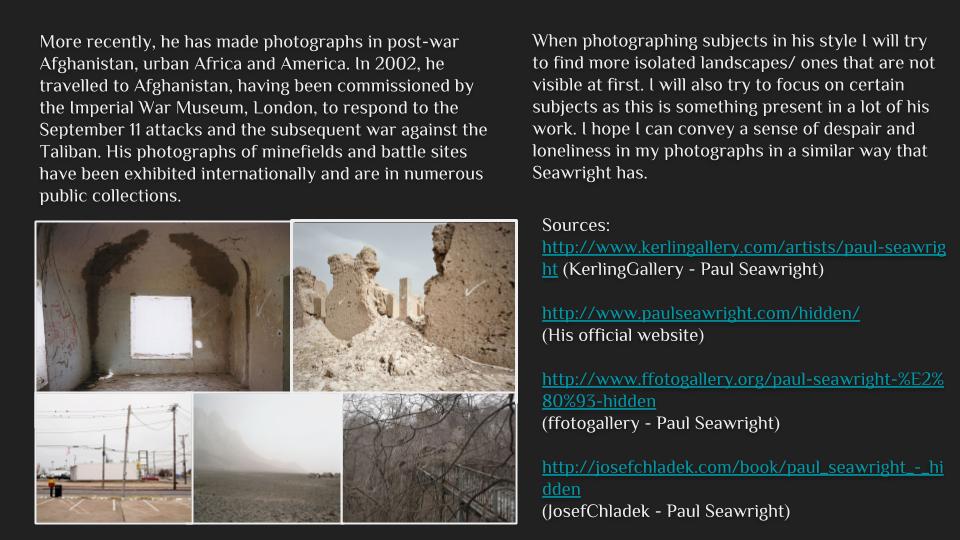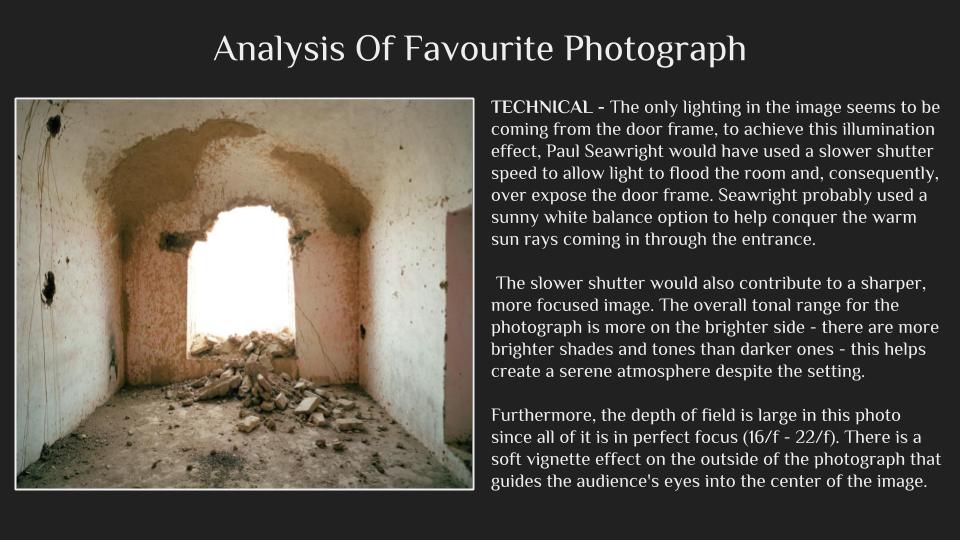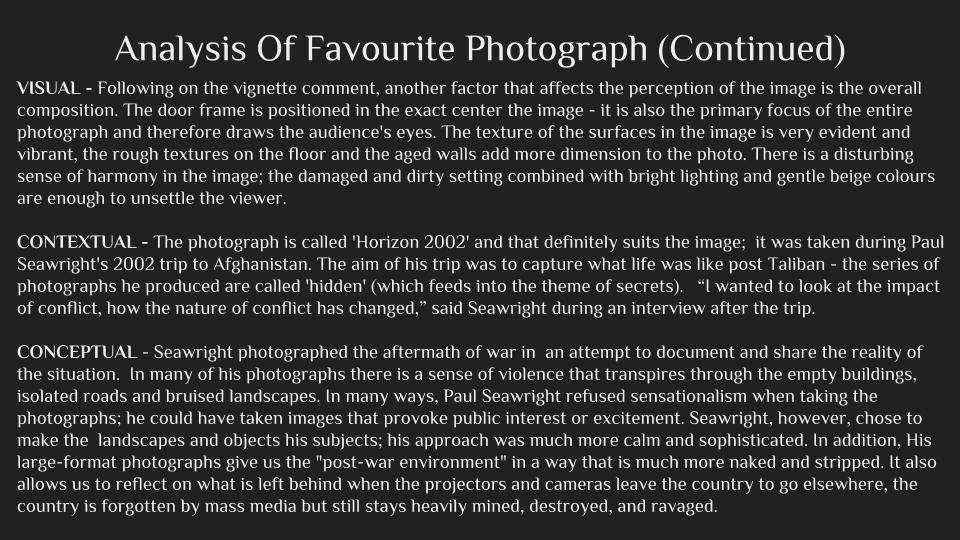Category Archives: AO2 Explore Ideas
Filters
second artist: midori harima and shoot ideas
These are some examples in which I was inspired(separate from the artists work):
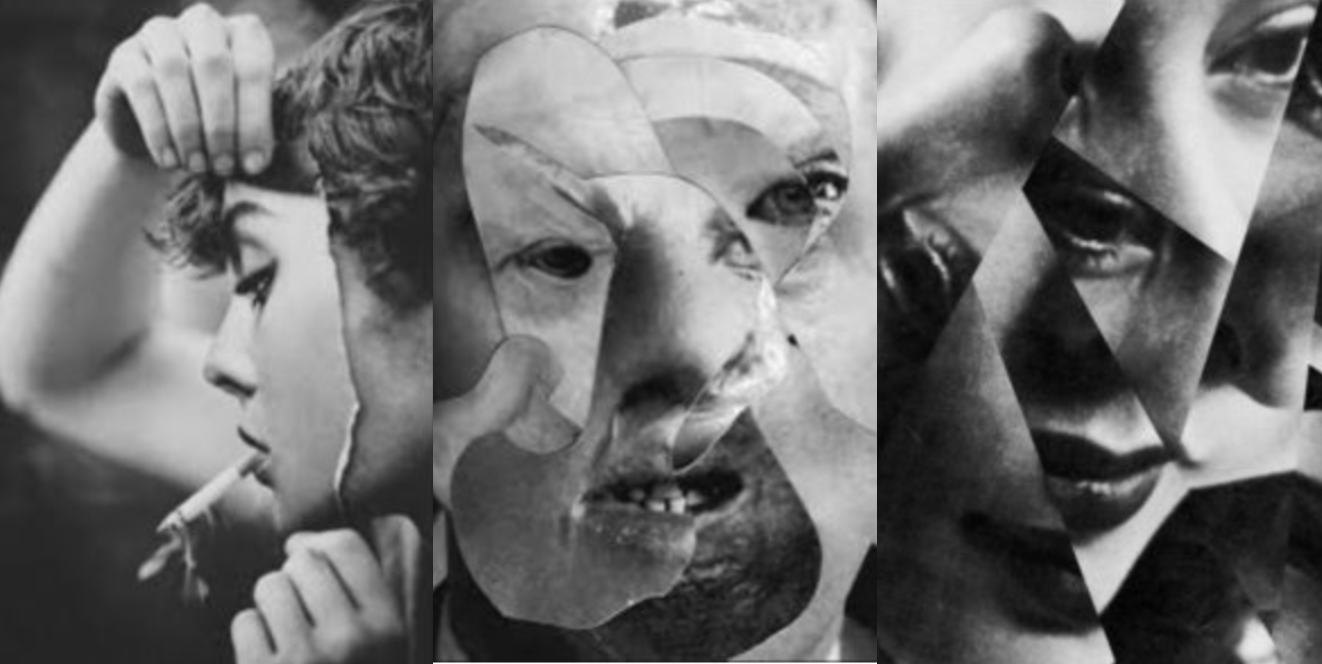
I was fascinated with the distortion within people due to either a self inflicting issue reflected onto themselves to mirror an emotion, this would come under their own personal secret and view of themselves and the continuous convention of people being subjected to portray a certain aspect of themselves to others.This would come under a surrealistic aspect and also possibly from using mirrors and or collage as well as Photoshop techniques within the image.
Second artist:Midori Harima
Harima relocated to the United States in 2001, and currently maintains a studio in New York. She is known for her technique of creating hollow paper sculptures from archival paper, onto which she has pasted photocopied images from magazines, newspapers, and other conventional media. By gathering and linking together fragments of the visual information that inundates today’s society, and thereby raising issues that cannot be represented by other means, her work leads to the discovery of intuitive beauty for which her practice is highly acclaimed.During her more recent work she links her ambition to projects featuring democracy and new inspiration from daily life such as every daily consummations and considering how this effects the democracy and as a whole within society.
why I chose her work:
I was originally inspired by the somewhat gruesome observations of identity and the conventions that we are not who we present others that we are, I was also interested wihtinn the collage and inventive way in which the faces were formed or even futher experimented wihtin using dolls and a reflection of behaviour and almost a code of a set way in which we have to behavouir and also look all the time. Harima relates sucessfully to this as her work shows a sense of emotion of a 3d image but onto a face stuture,bringing alive something that does not exist,and an emotion and we deem relastic to the surrounding society.
Favourite image analysis:
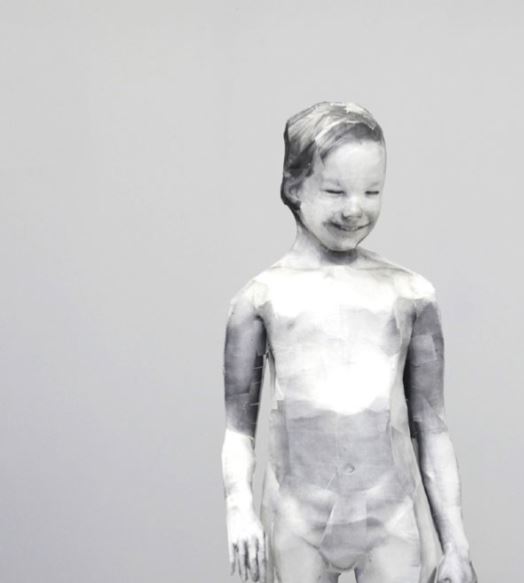
This image holds many connotations of being removed in many aspects, which creates an eerie sense due to the lack of colour and loss of humanness wihtin the image itself, it possess many characteristics to which a human should obtain but are lacking, such as movement and an expression but most importantly the image of the face is added over the head so the proportions are a way to present the image .It possesses many questions and fits into secrets codes and conventions as their is such a lack of colour and being it possess so much mystery wihtin the relationship of the body and the image form of the head itself,It once again fits into a theme of isolation and a confromative act of behaviour in which we have to comfort to as a code and how the face is smiling but is clearly a fake emotion.This could also be produced by collage seen above by my unrelated originally inspired images which led me to this artist.There is a clear sense of insecurity projected from herself onto her work and once gain highlights a false sense of security whitin a child being not being real.
inspiration from her work:
what I can take from her work is the way in which she forms a structure in order to demonstrate a false emotion and a consistent juxtaposition of trying to demonstrate a positive emotion. This links to my first artists as it constitutes for an act of behaviour and false sense of self.
Photo Journalism
History And Background
At the beginning, photojournalists took photos to go along with news stories. There might be a long, written story about a news event and one or two photos to go with it. Those photographs were very popular because they helped people really see what was going on in the news.
Soon, there were also entire stories being told mostly by the photos, with just a few sentences in-between to show the relationships among the photographs. These photo stories became very popular in magazines in the 1930s and after.
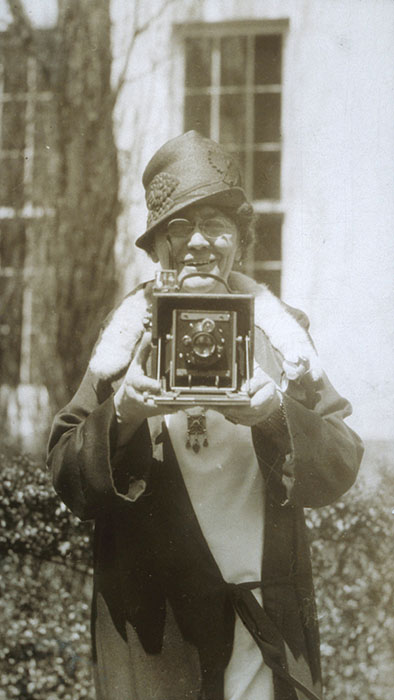
Photojournalism In Today’s World
Modern photojournalism became possible after small portable cameras were developed and became much widely available around the 2000s. These cameras were more manoeuvrable than earlier models, which could be as large as hat boxes. The smaller size allowed photographers to get closer to an event and capture it as it unfolded. The Internet, camera phones and the popularity of video sharing sites such as YouTube have changed the way photojournalism is viewed. These days the public demands sensational images and many media organizations comply in order to keep regular viewers and attract new ones.
Despite society’s insatiable appetite for sensational images, it’s important to help individual photojournalists to find a humanistic approach to picture taking. Stress the need to document real situations rather than pick certain points and sensationalize them.

Secrets, Codes and Conventions – Second Shoot
Planning
Task – Take 150-200 photos exploring the theme of exploration under the key work ‘secrets’
Props – I will be using the natural environment including the trees and plants that I come across as props and possibly people in some of the photographs.
Camera Settings – Due to deciding to do the shoot in the dark will have to use flash in most of my photographs in order to illuminate the subjects enough. I will be using this with an ISO of 800 and a shutter speed of 1/40.
Lighting – I will be using strong torches or flash from the camera in order to capture these photographs.
Location – St. Catherines Woods
Context – I am looking at the theme of exploration for my AS level externally set assignment.
Concept – I hope to take photographs of the woods in ways that would not be usually seen and to show the secrets that the dark can contain whilst taking inspiration from Emmanuel Tecles.
My Response
Contact Sheets



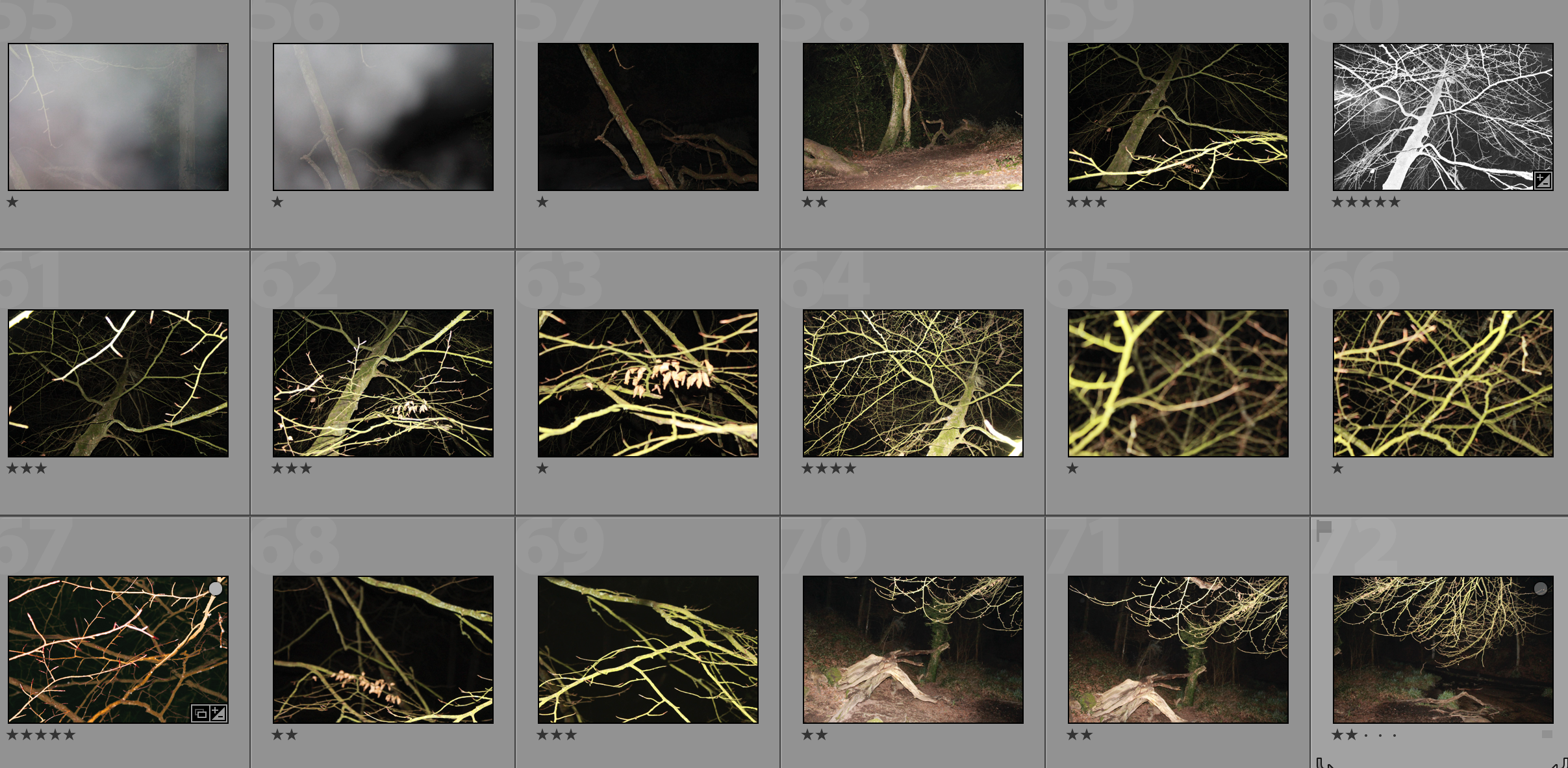


My Top 5 / Edits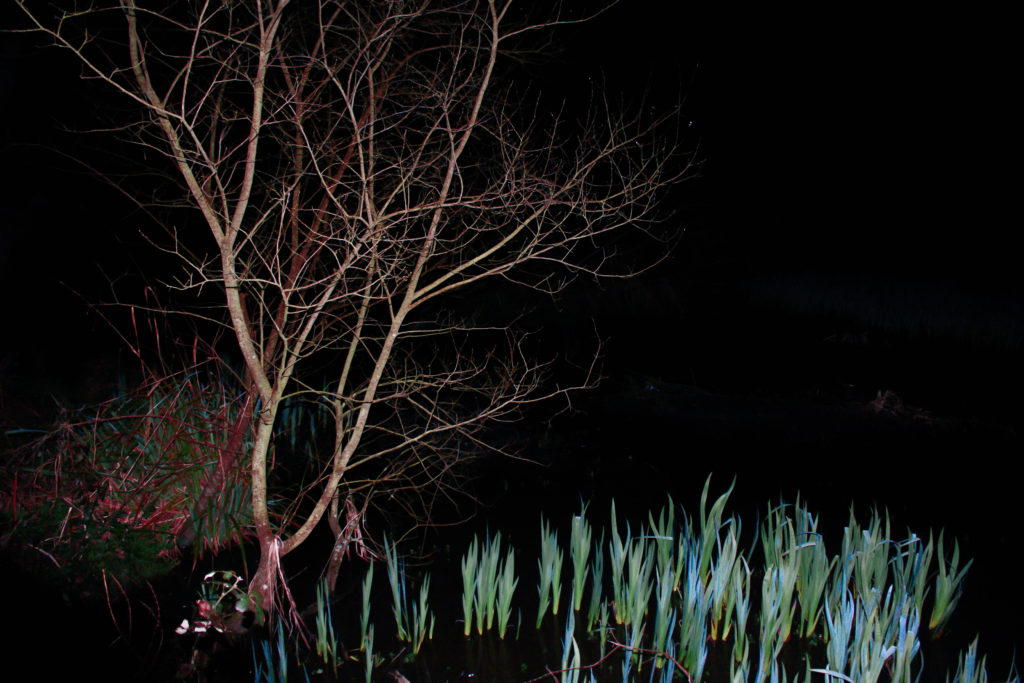


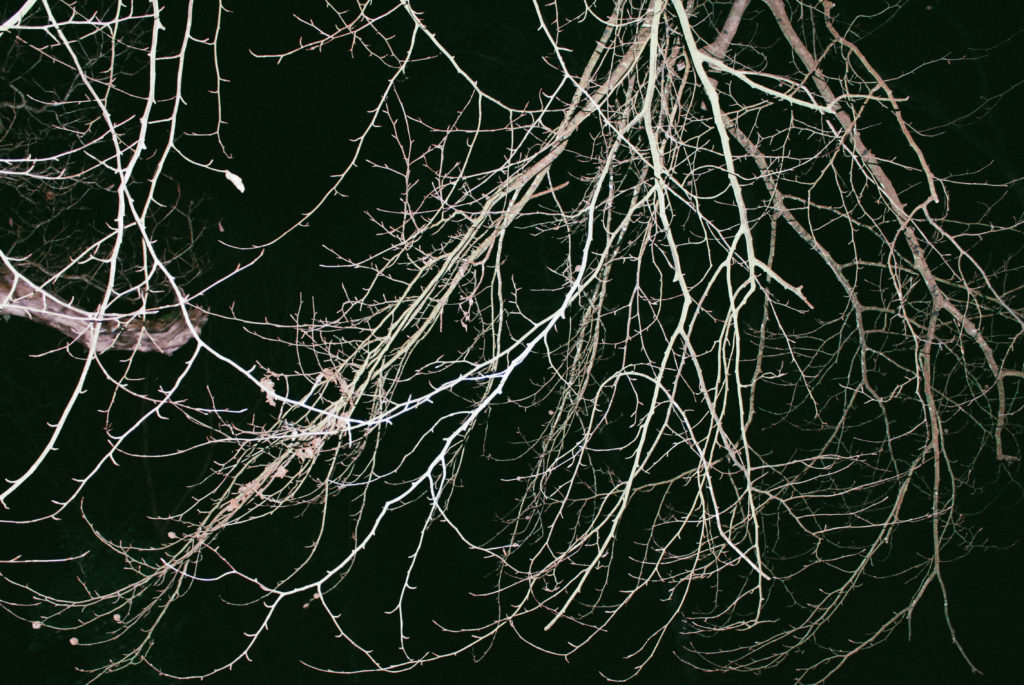
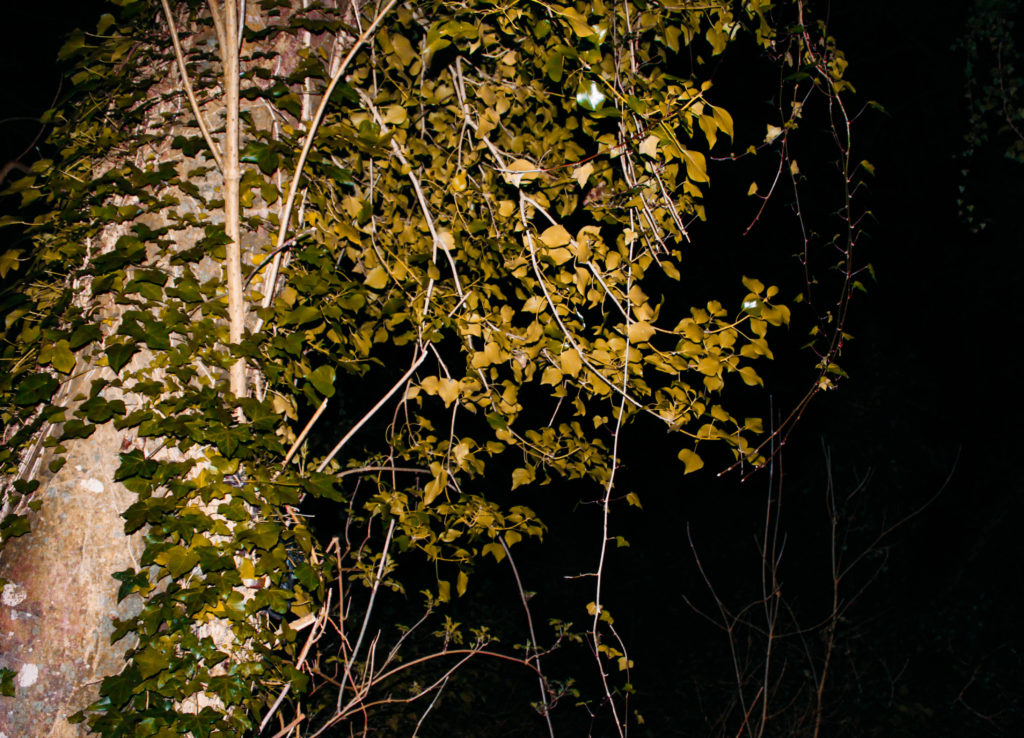
My Favourite Photograph
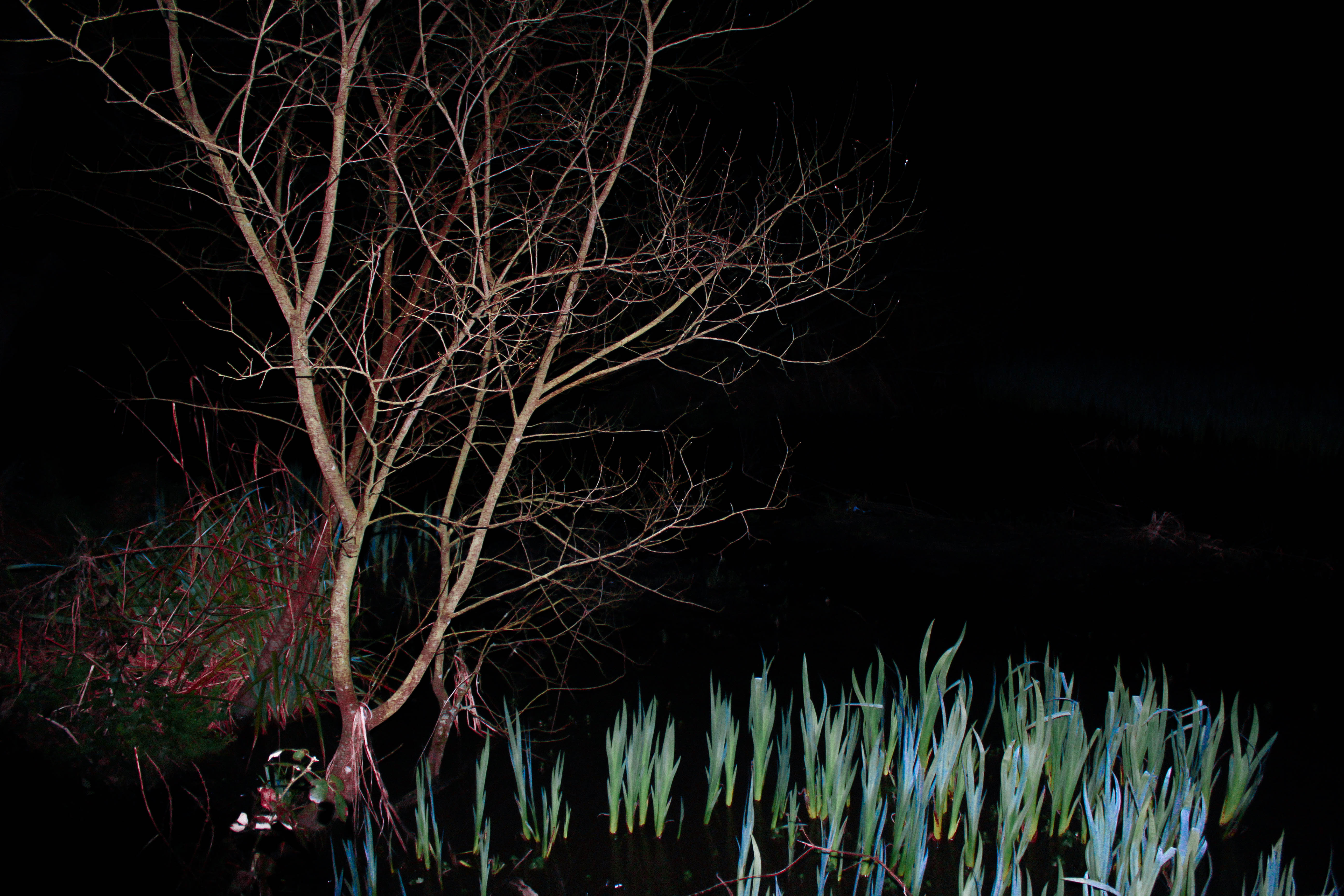
This photograph was taken using flash as the area was dark with no light in the area. This allowed me to illuminate the subjects of my choice and create contrast between the background and foreground. I used a shutter speed of 1/40 with an ISO of 800 in order to make sure the picture was bright enough to be seen – this helped to further emphasise the gap between foreground and background.
The colours within this photograph provide more contrast with the background – the bright vibrant colour of the pondweeds contrasts with the dull colour of the tree and the surroundings to create an interesting photograph. There is a wide tonal range in this photograph ranging from the highlights in the tree and pondweed to the purely black background, this helps to focus on the subjects of the photograph. There is a 3D effect in this photograph as you can clearly see the plants upfront as the background fades into darkness. I positioned the tree in line of one of the vertical lines of the rule of thirds in order to create a more interesting photograph.
This photograph was taken at night in St. Catherines Woods. It shows contrast between living plants and dead plants in an eery environment. The concept of this photograph is that it may be something that many people will see and walk past every day but when the subject is illuminated at night it shows another side of the view – almost its secret. It shows off the different branches of the dead tree individually and brings out the colour in the pondweeds to create a different environment.
Secrets, Codes and Conventions – First Shoot
Planning
Task – Take 150-200 photos exploring the theme of tunnels/caves under the key work ‘secrets’
Props – I will mainly be using only the tunnel/cave and its contents as the subjects but there may be people that feature in the photographs.
Camera Settings – Due to the extremely dark nature of the tunnel I will have to use flash in most of my photographs in order to illuminate the subjects enough. I will be using this with an ISO of 100 and a shutter speed of 1/40.
Lighting – I will be using strong torches, flash from the camera or natural daylight in order to capture my photographs.
Location – Jersey War Tunnels
Context – I am looking at the theme of exploration which includes caves and tunnels for my AS level externally set assignment.
Concept – I hope to take photographs of secrets within these tunnels that would not usually be seen whilst taking inspiration from both Robbie Shone and Gregory Berg.
My Response
Contact Sheet






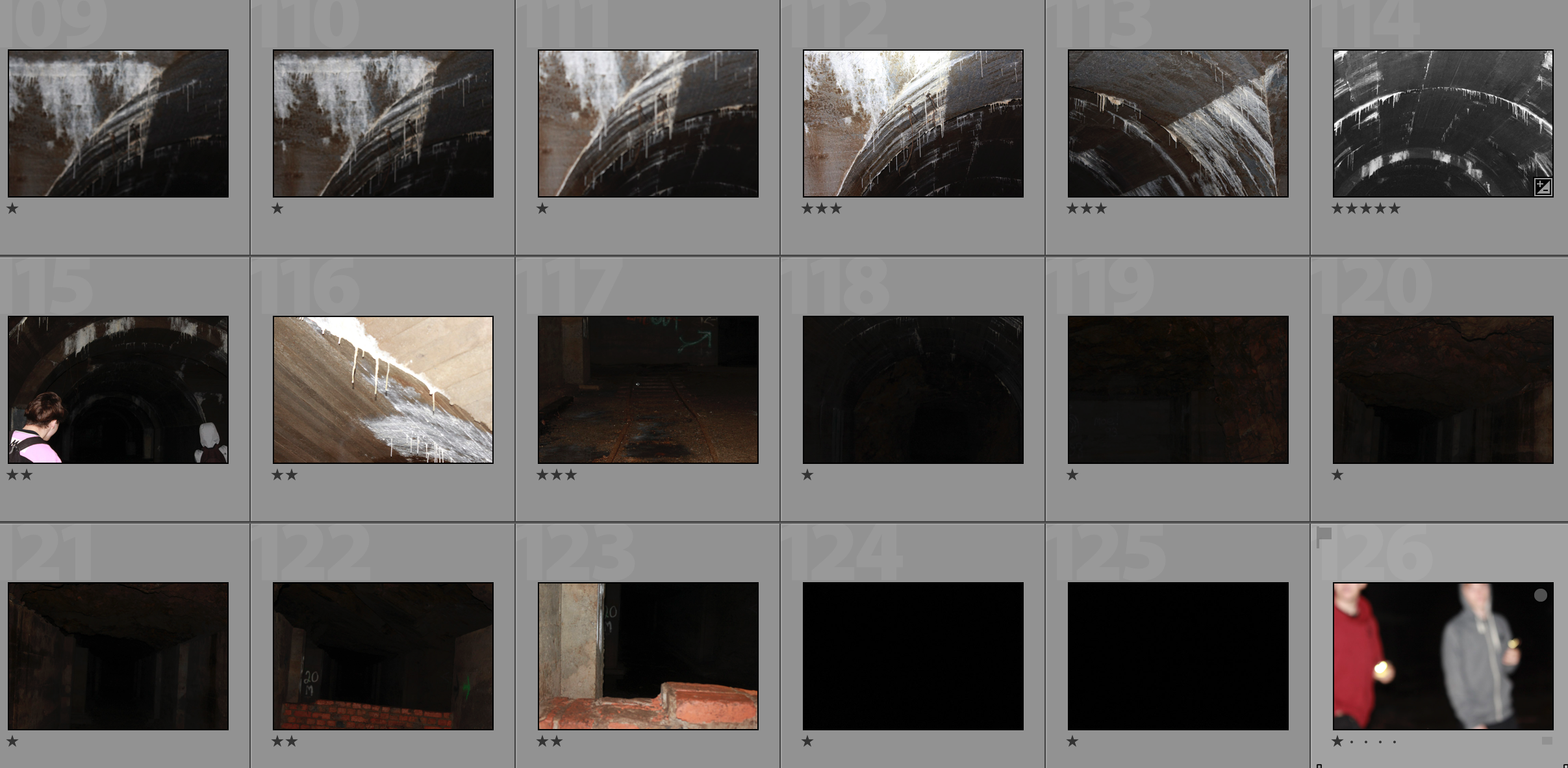


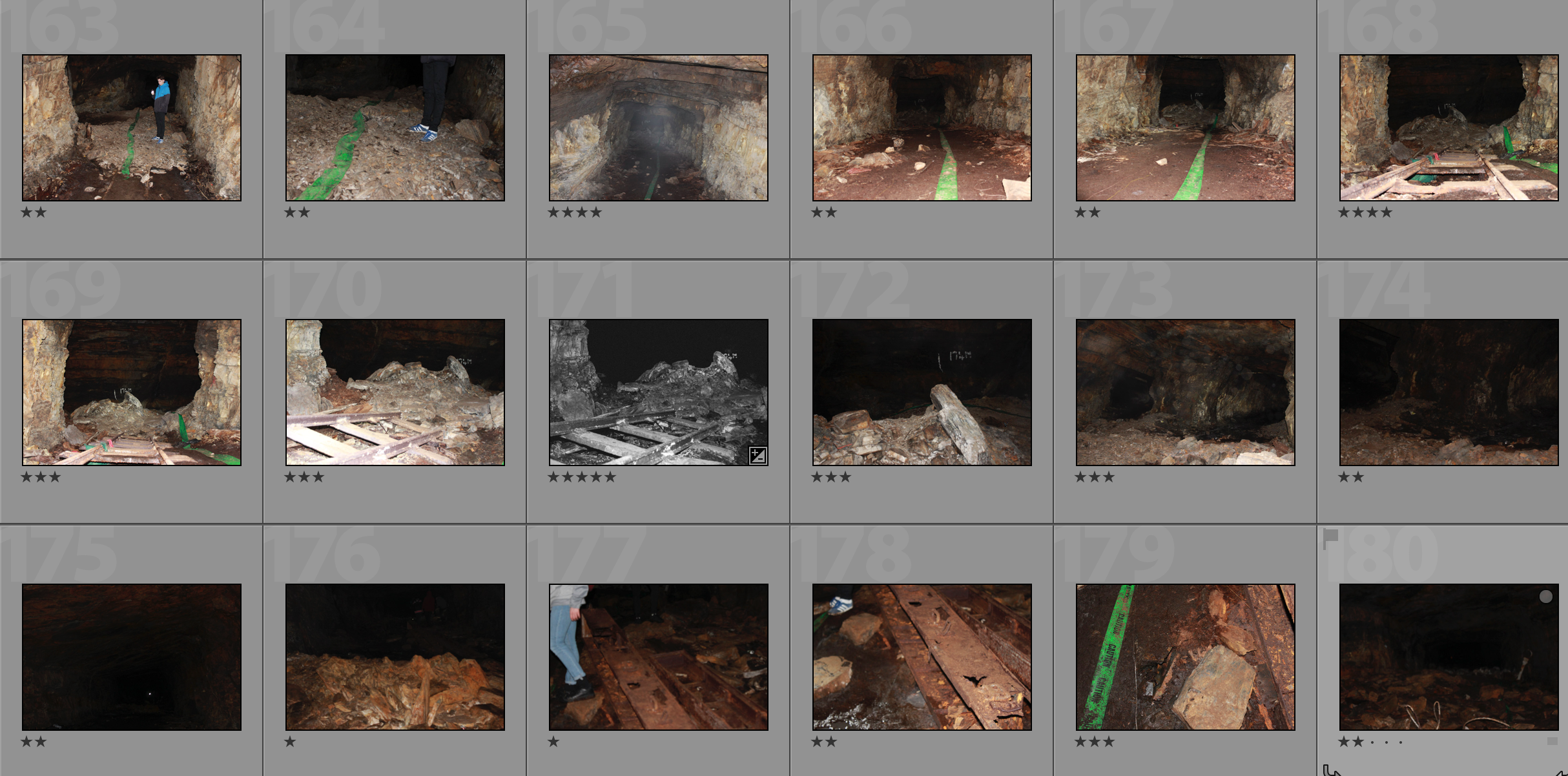


My Edits/Top 5





My Favourite Photograph

In this photograph I used flash lighting in order to illuminate the dark tunnel. The use of flash helped to bring out the highlights in the photograph but also create contrasting shadows within the photograph. A deep depth of field was used to capture this photograph as the whole of the photograph is in focus even the subjects in the far background. A shutter speed of 1/40 was used along with an ISO of 100 which allowed the photograph to best the best quality that it possibly could be.
I used a black and white filter for this photograph as I felt that it brought out the shadows and contrast within the photograph more. It is also more suitable for the theme of mystery and exploration. There is a very wide tonal range within this photograph which creates a more dramatic and interesting image. The texture of the dirt and rust on the subjects can be seen which makes the photograph seem more contextual and shows how forgotten the subjects are. It is quite a 3D photograph and there is a clear distinction between subjects in the foreground and the background.
This photograph was taken inside one of the tunnels that was made by the Nazi’s during the occupation of Jersey. This particular tunnel was intended to be used as a munitions storage and never reached the finished stage. This photograph shows the ruined state that the tunnel was left in and the railway system that they would use to transport materials.
From this set of photographs I am trying to look at the unexplored areas of Jersey that people would not usually see. This photograph contains old secrets of Jersey that have remained untouched and it shows that there are many of these secrets around the island that people are not aware of.
Mari Mahr
The work of Mari Mahr is deeply personal and autobiographical, yet addresses universal human concerns regarding where it is that each of us come from, and where it is that we each belong.
Her work has been exhibited worldwide including at the Serpentine, London and is held in numerous important collections including the Victoria and Albert Museum in London

I chose Mari Mahr as a photographer to research as many of her images contain a variety of objects: clocks, birds, fish, books, picture frames, eyes, stars, buildings etc. This could link to the theme of conventions as they seem to be relatively domestic objects suggesting the life of a family or community.
Mari Mahr constructs her photographs from artefacts of her past life and that of her family. She was born in Chile, grew up in Hungary and moved to London in 1972. Her father was an architect but died when she was twenty four. Her mother was a translator; work that brought her into contact with Che Guevara and Pablo Neruda. These diverse origins are represented in her work by an equally diverse selection of objects
This series Between oursleves: ‘My Daughter, My Darling’… and ‘Time for Sorow’ all use the same stage and the same backdrop within their seires; the only variations being in the lighting and in what is displayed. This simplicity is her strength, for she needs little to tell her stories; leaves for the time of year, but also for her memories. Her photographs are therefore both imitations of remembrances and completely artificial. This is clear in her use of old photographs. A story is told as if it were a myth or nursery rhyme combining a landscape and objects that carry a symbolic meaning

NEW PLACES – NEW CODES (2000)

“These are based upon recollections – sometimes vague and sometimes quite specific from that miraculous time when as a child I was trying so hard to make sense of all the people and all the things around me.”” So, existing in a kind of limbo, these images of mine might be seen as reality re-considered – things that I might or should have said at the time.”
SYMBOLS OF OURSELVES (2002)

“All through the ages and in all cultures there have been effigies made to represent us – sometimes for religious reasons, sometimes for commerce and sometimes just for play. My house is full of them.”
“I see these faces around me not as specific representations of particular people, but representing all people. This generic quality has made them especially suited to their being cast as characters with universal significance in some of my previous works.”
“These portraits are a tribute to this international ensemble that surrounds me.”
Here is Mari Mahr’s website and a link to one of her series that links into my interpretation:
Still Life Photography
Genre: Conceptual / Installation Photography
Still life photography is a genre of photography used for the depiction of inanimate subject matter, typically a small group of objects. It is the application of photography to the still life artistic style.
This genre gives the photographer more leeway in the arrangement of design elements within a composition compared to other photographic genres, such as landscape or portrait photography. Lighting and framing are important aspects of still life photography composition.


Still life images can be just about anything that doesn’t move. The definition of a still life is an inanimate object but other subjects are loosely termed as still life as well. These include flowers, food, etc. They are life forms but they don’t move. Because the subjects are smaller, lighting coverage is less and alternatively less power is need.
This goes back to a bit of photography history. In the early days of photography, exposures were pretty long, which made it ideal to take shots of inanimate objects. Of course, as technology improved and time wore on, still life photography is still incredibly popular because of product shots. Whether it’s for magazines, catalogues or websites, product shots and still life anything is very much in-demand.
The still life has always been a key tool for experimentation and development for the artist and photography adopted this tradition as well. Still Life Photography has its roots all the way back to Henry Fox Talbot (member of parliament, scientist, inventor and a pioneer of photography). Many of the early practitioners of still life photography adapted Fox’s examples and mixed them with traditional painting models. Most of this was in trying to get photography accepted as a serious art form. For example, many of the early Roger Fenton works involved typical subjects of fruit, themes of abundance and victorian style lighting.
Examples of Henry Fox Talbot’s Photography:

Still life became distinct genre and professional specialization in Western painting by the late 16th century. Still-life paintings also often are in the interior of ancient Egyptian tombs. It was believed that food objects and other items depicted there would, in the afterlife, become real and available for use by the deceased. Ancient Greek vase paintings also demonstrate great skill in depicting everyday objects and animals.
As photography matured into the twentieth century, photographers such as Edward Weston incorporated still life photography in experimentation with organic forms and connections in nature.
Examples of Ed Weston’s work:


Lighting’s always important in photography, but perhaps it’s even more so when still life is concerned. The pros normally rely on either a light box or a soft box to shoot their still lifes because it provides even light on the subject matter. Even lighting makes for better, more attractive images.
In landscape photography, there isn’t much we can learn about how to set up and control light. We generally have to work with what is there and about the only control we have is the time of day. In portrait photography, we have all the lighting options: main light, fill light, background light e.t.c, but we are restricted on the amount of time we can take. If we tweak and adjust too long, our subject will get tired of waiting and leave.
As in the composition arrangement, one of the main benefits of the still life photography lighting setup is that we can take as long as we want. We can tweak and fiddle until it is perfect.
Secrets, Codes and Conventions – Emmanuel Tecles


Emmanuel Tecles is a French self-taught photographer who has a taste for mysterious, enigmatic and dark atmospheres. Tecles looks at exploration and takes inspiration from the author Tim Burton. The exploration photography that Tecles does brings to the foreground aesthetic contrasts, shadows and their opposites. Tecles says that he has always been attracted by notions of traces, memories and it is by pushing doors of abandoned buildings that he discovered nostalgic atmospheres. The places that Tecles photographs link to history and architecture. The inspiration that I will take from Tecles work is the idea to look as exploration and the lost secrets that exploration can reveal, such as forgotten buildings/land.
My Favourite Photograph

In this photograph it appears that Tecles used natural light from the derelict building in order to cast light upon the destroyed subject. This creates an unusual environment as there is plenty of light which has friendly connotations but it is shone upon a ruined building which has connotations with being unfriendly. A shutter speed of 1/30-1/60 will have been used to capture this photograph along with an ISO of 100-200, by using these settings it allowed Tecles to capture a high resolution image with minimum grain whilst allowing plenty of light to enter the lens.
There are lots of earthly tones being used in this photograph which reflects the idea that the building is slowly being reclaimed by nature and the land is being returned to its original state. There is quite a wide tonal range in this photograph which creates contrast between the lights and darks and nature and urban. There is a 3D effect to this photograph due to the positioning of the furniture and the use of light in the background.
This photograph is one of the many photographs in which Tecles looks at destruction of urban environments, exploration and architecture. Tecles will often look at creating nostalgic scenes from these abandoned buildings which creates an aesthetically pleasing but strange photograph as he attempts to bring the history that was once the architecture in the photograph into it. Tecles also hints at natural reclamation of land by nature as the photograph shows the building falling apart and the natural light eventually leaking into the room.
Secrets, Codes and Conventions – Gregory Berg
Gregory Berg


Gregory Berg is a New York-based photographer and urban explorer that photographs parts of the subway that most people never want to see. Throughout New York City there are dozens of closed stations and platforms, some of which are decaying very quickly. Berg says “I find abandoned subway stations of maps, jump into active platforms and walk the live tracks, avoiding the 3rd rail and moving trains” which shows just how dedicated his to his photography. Some of the photographs that Berg takes shows colours and textures that are almost of a dystopian underworld that no one ever sees.
I have chosen to look at Berg as I hope to take inspiration from his work when looking at exploration. I will show the urban exploration side of his work in my photographs and hope that my photographs convey the same secrets of explored areas as Berg’s work does.
My Favourite Photograph

This photograph is taken with the dim light leaking into the abandoned subway station, this creates an ominous environment and so creates mystery within the photograph. A shutter speed of 1/30 or less will have been used with an ISO of 200 or 400 as a low shutter speed would be needed to allow enough light to enter the lens from the dimly lit area. There is quite a cold tone to this photograph which emphasises the fact that the area is abandoned and ruined. There is a deep depth of field in this photograph which allows the whole of the photograph to be kept in focus so that the long pathway can be seen.
There is not much colour in this photograph – the only colour that really stands out is the blue light reflecting off of the walls. This pushes the ominous environment that the photograph portrays and at the same time creates contrast with the shadows. The photograph has quite a dark tone in it as there are not many light tones/highlights, this creates an uneasy feeling within the photograph. There is a 3D effect to this photograph as the pathway travels so far from the foreground to the background.
This photograph was taken as part of Berg’s exploration of underground exploration of Brooklyn in New York. To me, this photograph shows how wasteful humans are as they can have something as massive and intricate as this subway station and simply brush it to the side and then forget about it. Berg is trying to show that even if it is forgotten about and run down, it’s still an amazing place to visit.
first artist:Connie imboden photographer and shoot plan
Originally inspired images by artist
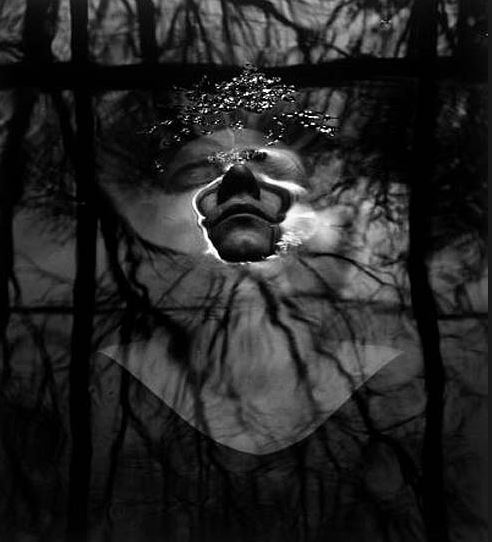
First artist study: Connie imboden photographer
Imboden is an american photographer who focuses on the movement and formation of the natural body surfaced within reflections in water and mirrored repetitive lines. Her work can be viewed in many collections including The Museum of Modern Art in New York and The Museum of Modern Art in San Francisco. Over many years her work has become very extensive across many galleries demonstrating many of her works. she has a successful book titled ‘out of darkness’ and won ‘one of the most beautiful books in the world’ award.He work describes a raw seduction of flesh,although her recent work is presenting the insights of reflections within her work,Throughout the years, Imboden has continued to teach and inspire colleagues and students alike in her quest to push the photographic medium to its highest level.
why I chose her work
The artists work connotes strongly to themes of isolation and also symbolizes a self endangerment which would be interesting to capture within an image.I also chose her work due to the dynamic shape and forming of bodies and the ways in which they move to demonstrate informative shapes,furthermore there is a combination of almost journalism of poeple and how they act, tracing and recording their behaviour,this is through abstract forming of bodies and moevemnt of bodily stature throughout her work,addtionally it also shows how we as humans are always trying to find something more about ourselves and the refusal as a society we have to secrets and a need to know and search for more information.
I also think the water is very effective in her work as it can symbolise a sense of weight and freedom but also the juxtaposition of isolation for others and a surrounding embodiment of nothing.
images analysis

within this work their is a clear fine art and conceptual element of surrealism within her photography,it allows a creative portrayal of reflection and question and links to her conventions of how poeple should behave and be prensted in to people ,this image above to me symbolizes a man exploring and trying to find himself and held secrets as the water is used to symbolise an isoltion form others. My favourite aspect of this image is the total divsion of colour and also framing of the face itself,it portrays an obvious movement and exploration of who we are or should be.The tones also change in order to connote a covered issue or perhaps an altered reality and a sense of mystery within the image once again questioning a secret and a search for something more and conflicting within the exceptions of codes that he is meant to oblige towards.
Ethically yes this image is clearly photoshopped and not a person going into water or even near it at all but does still successful demonstrate a separate side to ourselves that is not who we are or a search for a true identity not plagued with secrets and mystery to who we are or should act.



